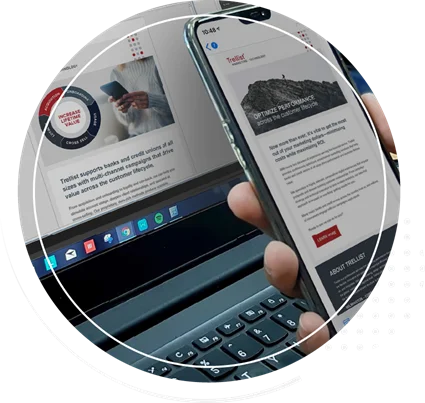Recently we submitted a webpage mockup to a client who responded, “will all my content fit above the fold?” No, we said, and that’s okay. Here’s why it’s okay to flout that rule, and 4 other user experience mis-guidelines.
1. Everything has to be above the fold, because users don’t scroll
While users will look first at the top of the page for whatever they seek, they will scroll further down the page IF what they’re seeing looks promising and IF the page doesn’t appear to end before the fold (which itself is difficult to pin down given the variety of devices, screen sizes and resolutions in use now). So when designing a page we use bordered content panels and sections that run past 700px on the page so that it doesn’t look like it ends there.
2. Desktop and mobile are two different sites
Desktop and mobile are two different experiences, but they needn’t necessarily be two different sites. Certainly trying to display the full-screen desktop site on a mobile device is a less-than-ideal experience, but fluid grids, scalable images, and CSS3 media queries allow browsers to format pages on the fly and offer a layout optimized for the device displaying them. Go to Hicksdesign and play with the size of your browser window to see an example of this in action.
3. Your homepage is the user’s starting point
We used to have to accommodate all user groups and pathing off the homepage, treating subpages as mere delivery vehicles once the user made a choice on the homepage. Then Google arrived on the scene. Now, users are much more likely to arrive at a subpage of your site via a search results page, and view your homepage as a gussied up About Us. So your subpages should support user pathing and orientation just as much as your homepage, if not more.
4. Typefaces should be Arial or Verdana
Are Arial and Verdana the most readable fonts on the web? Yes. Does that mean they’re the best for the user? Maybe not, if you’re trying to teach them something. Studies have found users presented with material in a “friendly” font retain less than users reading material in Monotype Corsiva and Comic Sans Italicized. These findings corroborate other research suggesting that when learning material is challenging, ultimately people understand it more thoroughly.
5. Choices should be limited to 7 items, plus or minus 2
George Miller’s theory that short-term memory is limited to 5-9 items, while sound in some cases, doesn’t apply to user experience on the web. By their nature, webpages offer persistently available navigation, meaning that users don’t have to memorize choices and can therefore handle a larger number of them. In fact, a broad and shallow site organization requires less short term memory than a narrow and deep drilldown. See any Craig’s List and McMaster-Carr for examples of effective pages that blow the 7+/-2 rule off the charts. Some friendly advice though: if you’re taking the McMaster route it’s probably best to stick to Arial and Verdana.
So when clients ask us whether rule X, Y or Z applies, we explain “it depends.” It depends on the unique confluence between business requirements and user requirements, which is why Trellist amasses a thorough understanding of our clients’ challenges before beginning to construct solutions.











